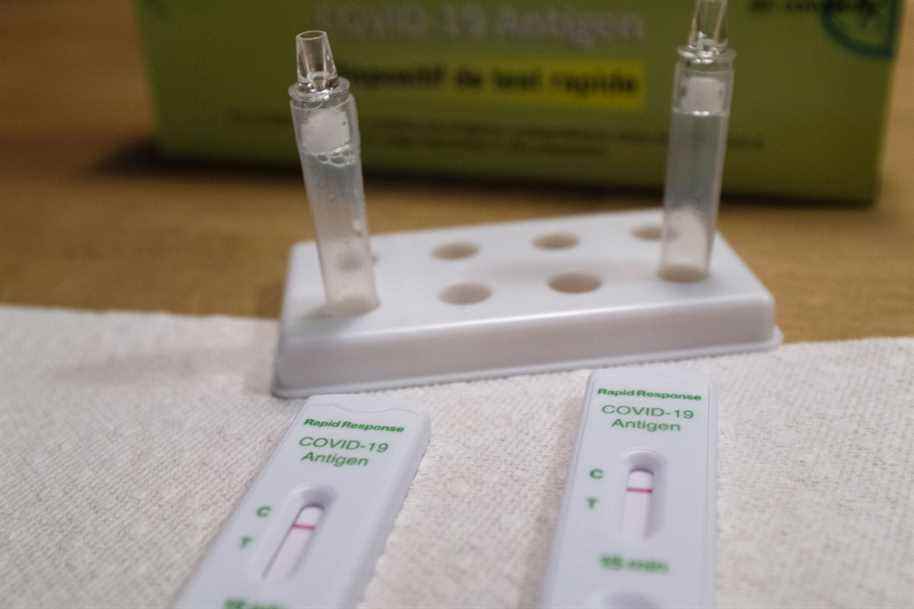A Quebec committee is preparing to recommend rubbing the rapid test swab in the mouth in addition to the nostrils. It follows practices adopted elsewhere in Canada since February.
Posted at 12:00 a.m.
“A committee of experts, of which I am a member, decided to recommend the simultaneous use of the mouth and nostrils for rapid tests,” explains Cédric Yansouni, specialist in infectious disease diagnostics at the McGill University Health Center (MUHC). “We have known for a long time that the virus does not appear at the same time in the mouth and the nostrils. The mouth comes first, but we did the test in the nostril because the viral load is higher there. But with the Omicron, the interval is longer. There may be one or two days of symptoms without the virus being very present in the nostrils. »
This committee of experts was created in January to advise the General Directorate for the Executive and Operational Management of the Pandemic (DGGEOP).
A Nova Scotia study prepublished in late January on MedRxiv showed that the false negative rate drops from 22% to 5% when rubbing the swab of a BTNX rapid test first in the mouth and then in the nose, rather only in the nose. “It brings the false-negative rate down to about the level of the Delta variant,” says the study’s lead author, Glenn Patriquin, of Dalhousie University. The technique also improves the results of the rapid PanBio test.
The proposed technique is to rub the swab against the inside of both cheeks, then against the back of the tongue, before performing the two rubs in each nostril according to the test manufacturer’s instructions.
Elsewhere in Canada
Nova Scotia adopted the recommendation in February, according to Dr.r Patriquin. Ontario followed suit a few weeks later and Saskatchewan in March.
“We were the first to test this approach because we use rapid tests a lot for community detection, says Dr.r Patriquin. We have clinics using rapid tests. A person can come in and take the sample in minutes under the direction of an attendant, who puts the liquid on the test cartridge and text the result 15 minutes later. The attendants are not caregivers, which facilitates recruitment.
The Halifax microbiologist did the same study for PCR tests, but found no difference in the rate of false positives if the swab was swabbed into the mouth in addition to the nose.
The Dr Yansouni believes that the Dr Patriquin made a “very beautiful study”. “We started discussing such a recommendation as soon as the study was published. »
Of note, the false negative rate for samples taken only from the mouth was higher than for samples taken only from the nostril, due to the lower viral load in saliva. “So if we have to choose, we have to put the swab in the nose”, says the Dr Patriquin.
Learn more
-
- 17.2 million
- Number of samples for PCR tests since the start of the pandemic in Quebec
source: inspq

